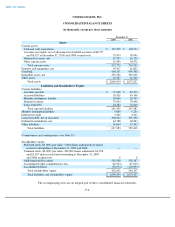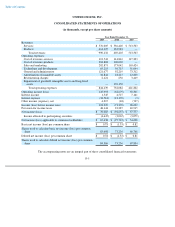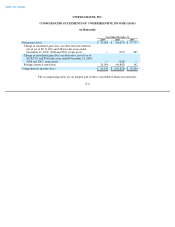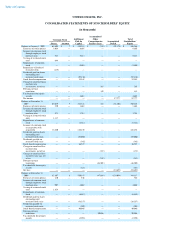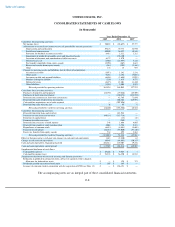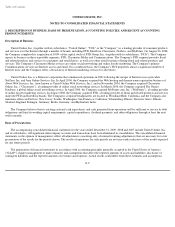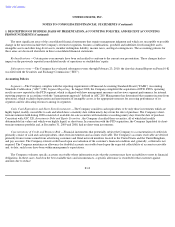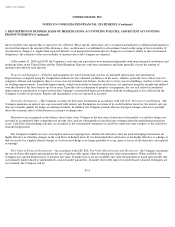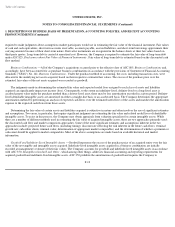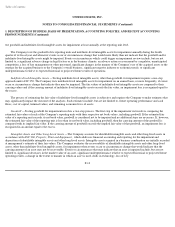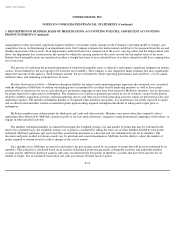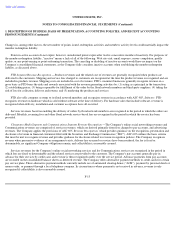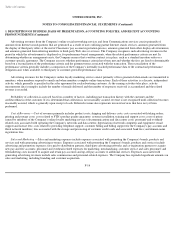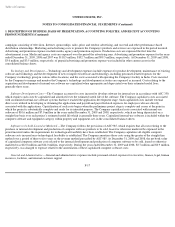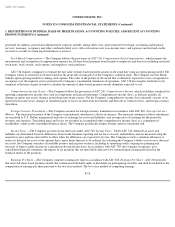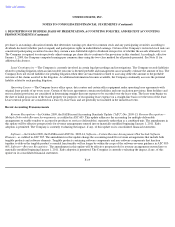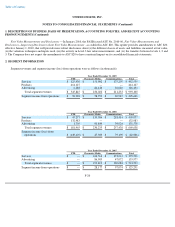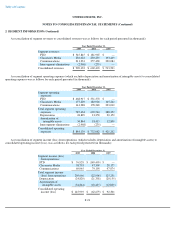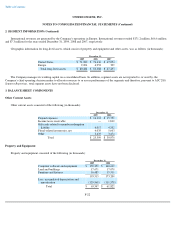Classmates.com 2009 Annual Report Download - page 115
Download and view the complete annual report
Please find page 115 of the 2009 Classmates.com annual report below. You can navigate through the pages in the report by either clicking on the pages listed below, or by using the keyword search tool below to find specific information within the annual report.
Table of Contents
UNITED ONLINE, INC.
NOTES TO CONSOLIDATED FINANCIAL STATEMENTS (Continued)
1. DESCRIPTION OF BUSINESS, BASIS OF PRESENTATION, ACCOUNTING POLICIES, AND RECENT ACCOUNTING
PRONOUNCEMENTS (Continued)
required to make judgments about assumptions market participants would use in estimating the fair value of the financial instrument. Fair values
of cash and cash equivalents, short-term accounts receivable, accounts payable, accrued liabilities, and short-term borrowings approximate their
carrying amounts because of their short-term nature. Derivative instruments are recognized in the balance sheets at their fair values based on
third-party quotes. Long-term debt is carried at amortized cost. However, the Company is required to estimate the fair value of long-term debt
under ASC 825, Disclosures about Fair Value of Financial Instruments . Fair value of long-term debt is estimated based on the discounted cash
flow method.
Business Combinations —All of the Company's acquisitions occurred prior to the effective date of ASC 805, Business Combinations and,
accordingly, have been accounted for as purchase business combinations in accordance with the provisions of Statement of Financial Accounting
Standards ("SFAS") No. 141, Business Combinations . Under the purchase method of accounting, the costs, including transaction costs, were
allocated to the underlying net assets acquired, based on their respective estimated fair values. The excess of the purchase price over the
estimated fair values of the net assets acquired was recorded as goodwill.
The judgments made in determining the estimated fair value and expected useful lives assigned to each class of assets and liabilities
acquired can significantly impact net income (loss). Consequently, to the extent an indefinite-lived, definite-lived or a long-lived asset is
ascribed greater value under the purchase method than a shorter-lived asset, there may be less amortization recorded in a given period. Definite-
lived identifiable intangible assets are amortized on either a straight-line basis or an accelerated basis. The Company determines the appropriate
amortization method by performing an analysis of expected cash flows over the estimated useful lives of the assets and matches the amortization
expense to the expected cash flows from those assets.
Determining the fair value of certain assets and liabilities acquired is subjective in nature and often involves the use of significant estimates
and assumptions. Two areas, in particular, that require significant judgment are estimating the fair value and related useful lives of identifiable
intangible assets. To assist in this process, the Company may obtain appraisals from valuation specialists for certain intangible assets. While
there are a number of different methods used in estimating the fair value of acquired intangible assets, there are two approaches primarily used:
the discounted cash flow and market comparison approaches. Some of the more significant estimates and assumptions inherent in the two
approaches include: projected future cash flows (including timing); discount rate reflecting the risk inherent in the future cash flows; terminal
growth rate; subscriber churn; terminal value; determination of appropriate market comparables; and the determination of whether a premium or
a discount should be applied to market comparables. Most of the above assumptions are made based on available historical and market
information.
Goodwill and Indefinite-Lived Intangible Assets —Goodwill represents the excess of the purchase price of an acquired entity over the fair
value of the net tangible and intangible assets acquired. Indefinite-lived intangible assets acquired in a business combination are initially
recorded at management's estimate of their fair values. The Company accounts for goodwill and indefinite-lived intangible assets in accordance
with ASC 350, Intangibles-Goodwill and Other , which among other things, addresses financial accounting and reporting requirements for
acquired goodwill and indefinite-lived intangible assets. ASC 350 prohibits the amortization of goodwill and requires the Company to
F-12



